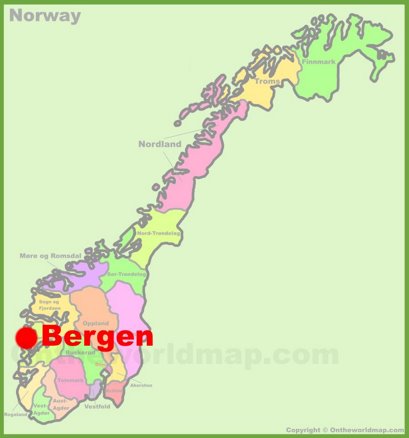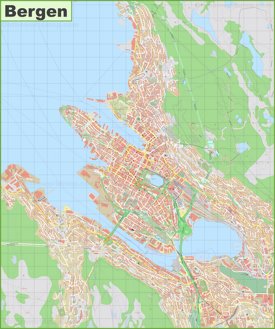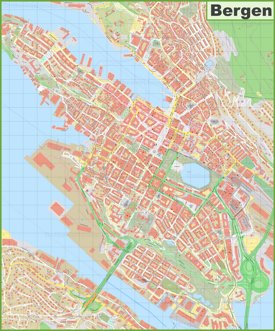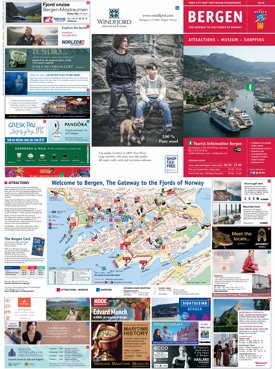Bergen Maps
Online Map of Bergen
About Bergen
Bergen is the second-largest city in Norway, located on the country's southwestern coast. Founded in 1070, it served as Norway's capital in the 13th century. The city has a population of approximately 291,940 as of 2024, making it an important cultural and economic center in the region.
The city's geography is characterized by its position between seven mountains, with Mount Fløyen and Mount Ulriken being the most prominent. Bergen has an oceanic climate with significant rainfall throughout the year, earning it the nickname "The City of Rain." The average annual precipitation is about 2,250 mm (89 inches), making it one of the wettest cities in Europe.

Bergen's historic harbor district, Bryggen, is a UNESCO World Heritage site and one of Norway's most famous attractions. This former Hanseatic commercial district features a series of colorful wooden buildings that date back to the 14th century, representing the city's important role in the medieval trading empire. The city is also home to several significant cultural institutions, including the Bergen Philharmonic Orchestra, one of the world's oldest orchestras, founded in 1765.

The city serves as a gateway to the Norwegian fjords and is a popular starting point for tourists exploring the region. Bergen Fish Market (Fisketorget) has been a meeting place for merchants and fishermen since the 1200s and remains a vital commercial center. The city boasts several museums, including the KODE Art Museums, which house one of the largest collections of art in Scandinavia, and the Bergen Maritime Museum, showcasing the city's rich maritime heritage.
Education plays a significant role in Bergen's modern identity, with the University of Bergen, established in 1946, being one of Norway's major academic institutions. The city is also an important center for aquaculture, offshore petroleum industry, and shipping, contributing significantly to Norway's economy.
The Facts:Region: Western Norway.
County: Hordaland.
District: Midhordland.
Population: ~ 291,940 (2024).
Metropolitan population: ~ 469,238.








